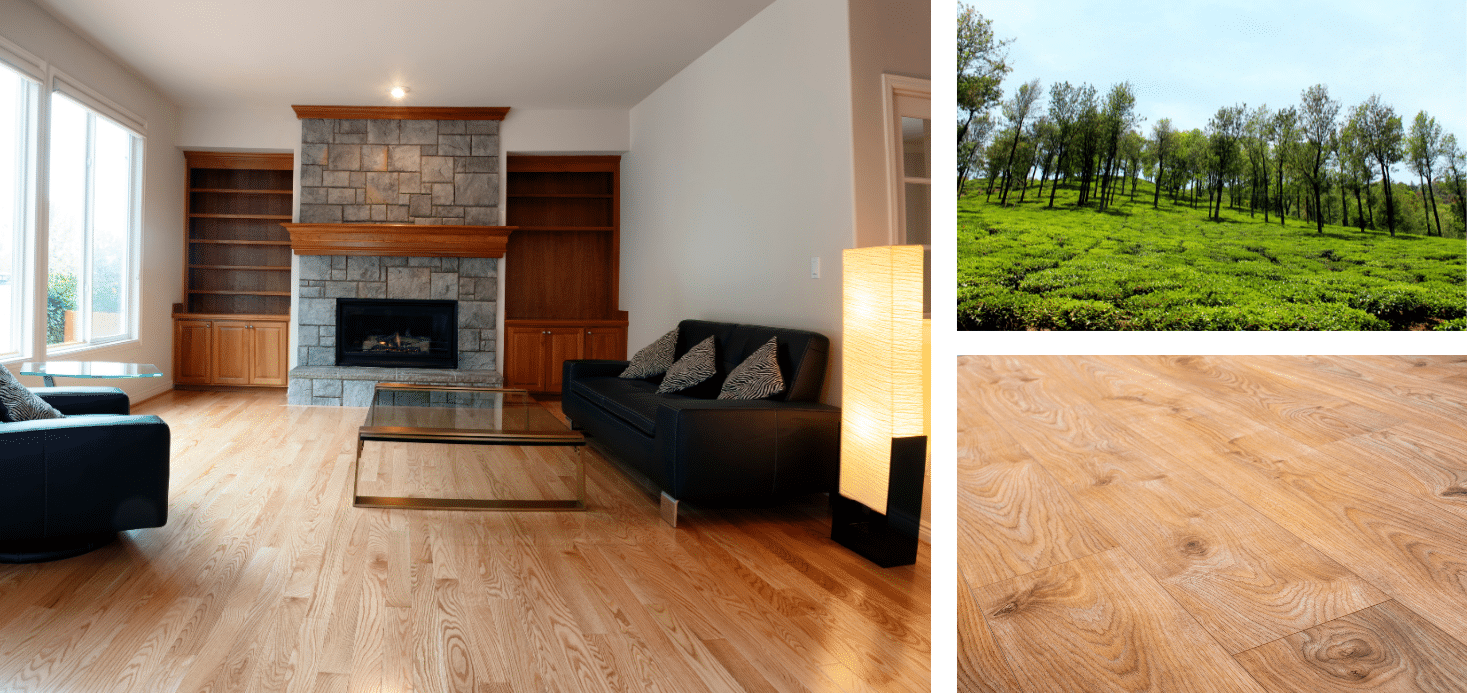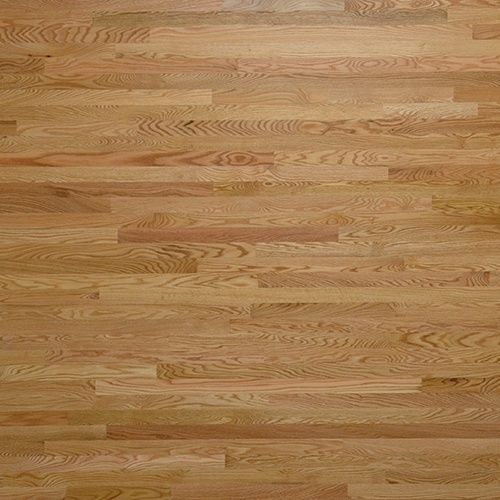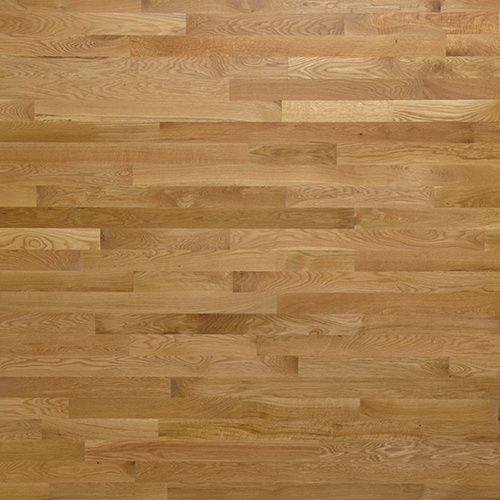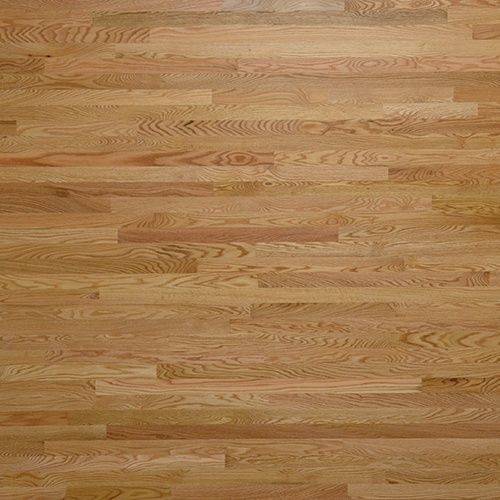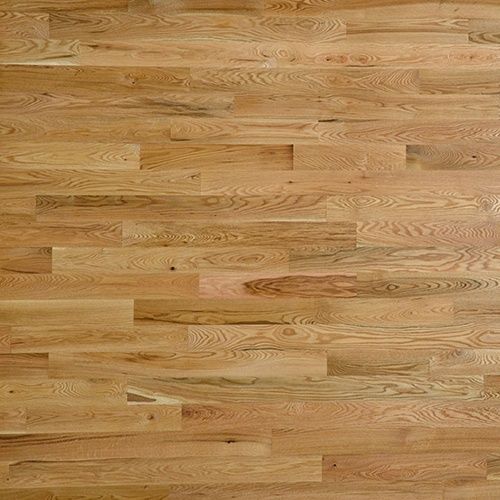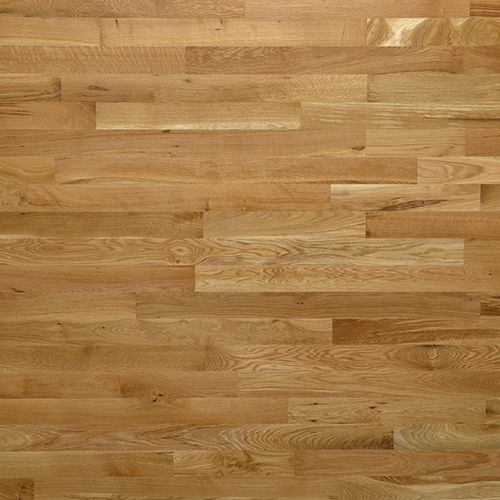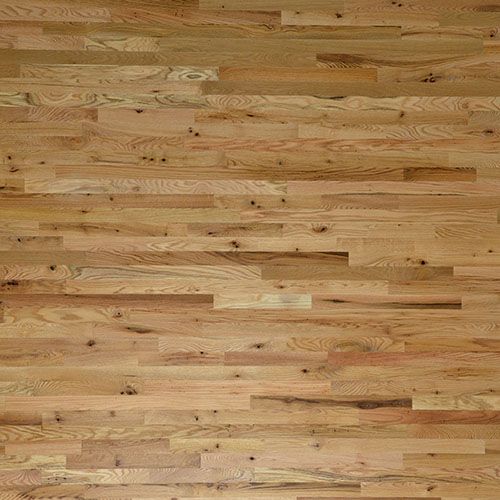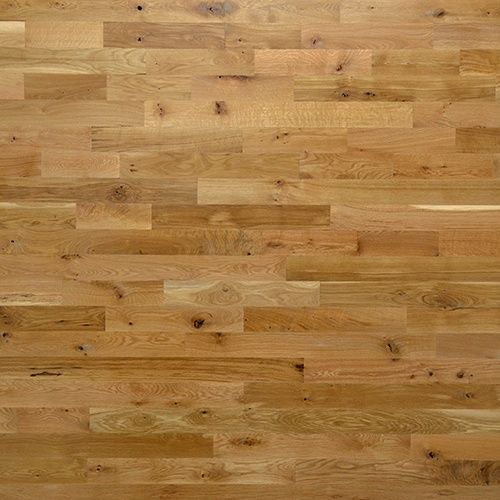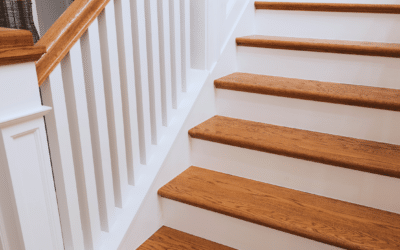Oak flooring offers a timeless aesthetic and is sturdy enough to withstand significant wear over time – all at a reasonable price. When it comes to the most popular hardwood flooring species, you have two main options: red or white oak.
In this article, you will learn about the similarities and differences and pros and cons of red and white oak lumber and flooring. By the end you will know how red oak and white oak compare, and which one is best for your home or business.
Oak Lumber Vs. Cannonballs
Throughout history, oak’s remarkable strength and density established it as an exceptional material for many different kinds of structures and vessels. Even naval warships. A famous testament to the longevity of oak is the USS Constitution – the oldest commissioned warship still sailing.

Nicknamed ‘Old Ironsides,’ this ship’s hull is made of a three-layered oak laminate. The inner and outer layers are composed of white oak with a middle layer of southern live oak.
The result is a near-impenetrable hull. Over two-hundred years ago, when British ships tried to sink this vessel, the cannonballs merely embedded in the outside layers of the white oak or bounced off into the ocean.
Old Ironsides survived the Revolutionary War (and sunk four British frigates) to become an American legend thanks in part to the strength and reliability of its oak construction.
Besides being the stuff of legendary warships, oak is also in high demand for flooring. Once you have decided to go with oak though, you will need to choose between red and white oak.
Similarities of Red & White Oak
For accuracy, I used the NWFA Wood Species Technical Publication 4th Edition to write this section.
Red oak and white oak both belong to the oak genus, Quercus. Although they have distinctions worth considering, they also have much in common.
- Low photosensitivity: Both red and white oak have low photosensitivity, so they have built-in resistance to UV rays. But over time you can expect oak to lighten in color.
- Ring-porous grain: They both have a ring-porous grain and are easy to sand and work with. The wood is easy to cut, shape, nail, and glue.
- Accept stain well: Both red and white oak accept stain well; however, they will look different when you apply the same stain color.
- Grade: When you shop for red oak and white oak flooring, you will find that they are graded the same: clear, select, no. 1 common, no. 2 common.
Because of their similarities, many people have trouble telling red oak and white oak apart. The easiest way to tell the difference between the two is through a chemical test using sodium nitrate. White oak reacts more dramatically to the chemical test, undergoing noticeable changes. The Woodwise White Oak Test Kit makes it easy to know the difference.
Oak Grading Criterion
Both red and white oak share the same grading criterion. When you look at oak flooring available to purchase, you’ll find a range of quality, character, and colors, depending on the grade.
- Clear
- Select
- No. 1 Common
- No. 2 Common
Clear
At one end, you’ll find clear oak flooring, the highest grade of oak you can buy. It’s primarily made from heartwood, the innermost part of the tree, with color that varies from dark to light. You will notice that clear oak has a consistent appearance, with fewer blemishes or imperfections compared to other grades.
Select
Move down the line and you’ll encounter select oak, a blend of heartwood and sapwood. The sapwood lightens the overall color, creating more variation in the grain and appearance. You will also start to see the character of the tree, such as small knots and flag worm holes. Unlike clear oak, select oak might need a touch of wood filler to smooth out some open spaces.
No. 1 Common
Next, you will find no. 1 common oak. This grade shows off a striking contrast between the dark heartwood and lighter sapwood. It’s a grade with high-quality character and small knots, mineral streaks, occasional machine burn, and pin worm holes.
No. 2 Common
Finally, there’s no. 2 common oak, which is a more rustic option. This grade accentuates the tree’s natural traits and beauty. The contrast in colors is more pronounced, with additional details from nature visible in each plank.
Red Oak Vs White Oak: Key Differences
Red oak and white oak are similar, but they also have distinctions. White oak is a little heavier and tougher than red oak and comes at a higher price point. They also differ in style, color, price, and how they handle water.
Red Oak
Red oak is a popular flooring option with a grain pattern that’s excellent for camouflaging scratches and dents.
Style
Red oak works well with modern, traditional, and rustic styles.
Price
You will find that red oak flooring is a fine choice if you’re seeking an affordable and visually appealing option. As the most abundant and rapidly growing type of oak, it’s less expensive than white oak and provides a sustainable and cost-effective material for a warm and inviting home interior.
Color
Red oak, once harvested, possesses a reddish hue that dissipates as the wood dries over time. Once ready for interior use, the wood features red or pink undertones, and the heartwood in red oak is wheat to medium brown.
Water-Resistance
Compared to white oak, red oak isn’t effective outside in a wet environment. This is the reason why the builders of the USS Constitution chose white and live oak. For flooring, this is far less of a concern because your floor will be inside, away from the elements and protected by sealer and finish.
White Oak
When it comes to selecting a flooring material that embodies elegance, tenacity, and a warm aesthetic, white oak is in high demand.
Style
White oak works well with any style.
Price
White oak is more expensive because it is a little heavier and stronger than red oak, and many people prefer its color profile.
Color
Its saddle tan hue, peppered with shades of beige, olive, and yellow brown, gives it a sophisticated and warmer look compared to red oak.
Water-Resistance
One notable feature of white oak is its impressive stability in the face of humidity changes, a characteristic that’s particularly enhanced in quarter-sawn white oak.
Staining: Red Oak Vs White Oak
Both oak species look different with the same stain color, but they can be stained any color you want. With oak, you have many color possibilities. The steps can vary, however, depending on the color you’re after. For example, if you have red oak and want to remove the reddish pink hues, you will first need to use a product like Bona Red Out.
Before staining, it’s best to know the result you would like to achieve by saving or bookmarking pictures that look like the floor you want. This way you will have a visual that guides you or the contractor you hire towards what you envision.
Read more about finding the perfect oak stain color. And if you want to stain oak darker, read about proven dark stain color combinations.
Red Oak Vs White Oak for Flooring: Which One is Better?
Choosing between red oak and white oak is a matter of preference and budget. Both offer the beauty that only nature can provide. That said, white oak offers more advantages with slightly better strength and heft. It’s also more on trend.
However, white oak will look dull when it’s coated only with a clear water-based finish. Red Oak looks natural and stunning with the same coating. No matter whether you choose red oak or white oak, your floor can look amazing and unique in either a dark or light shade.
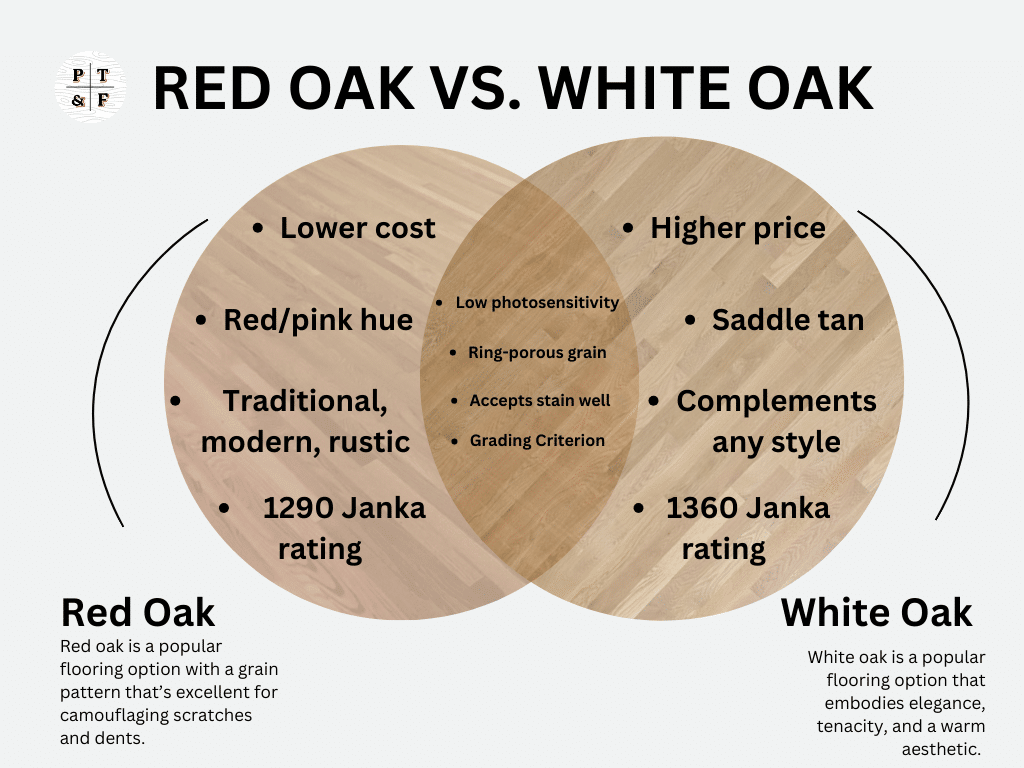
Summary
Oak is a sustainable material that’s the most popular species for hardwood flooring. When you shop for oak flooring, red and white oak are your two main choices.
The similarities include low photosensitivity, ring-porous grain, responsiveness to staining, and consistent grading criteria. There are four main grades of oak flooring: clear, select, No. 1 common, and No. 2 common, each with unique characteristics and aesthetic qualities.
The key differences between red and white oak lie in their weight, toughness, color, price, and reaction to moisture. Red oak is generally more affordable with a reddish hue and exhibits better resistance to scratches and dents. White oak offers a warmer, more sophisticated aesthetic and performs exceptionally well in high-humidity environments.
Both oak types respond well to staining, but the final look greatly depends on the chosen stain color, so you will want to have a clear goal in mind before starting the staining process.
In the end, the choice between red oak or white oak flooring comes down to your preference and budget. Explore our range of oak flooring and as always, feel free to give us a call or email us with any questions about oak flooring.
